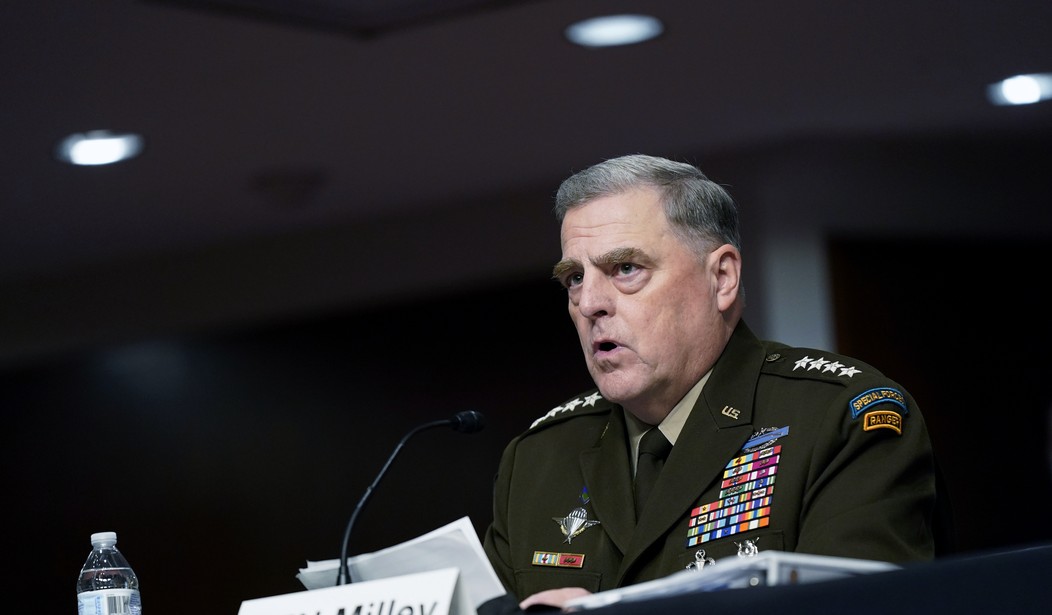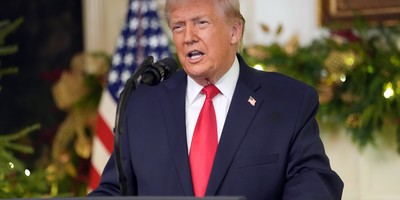The Chinese spy balloon circus is over, but now it’s question time for the Biden administration who let this espionage device from Beijing float around for days. We finally downed the balloon over the Atlantic Ocean near the Carolinas over the weekend. But how could this have happened? It wasn’t traveling at supersonic speeds, and our tracking devices could have stopped it when it was hovering near Alaska. There was time to shoot down this balloon before it breached US airspace.
We know about the Pentagon's concerns about falling debris killing American citizens. The floating spy circus had enough equipment to span three bus lengths—we get the security concerns, but the delay in action is another matter. Spencer wrote on Monday about the latest twist in this episode: there was a possibility that it could have been carrying explosives. Sounds like something you shoot down when it’s near Alaska, right? Well, maybe not. All is not well at the Pentagon regarding detection capabilities, it would seem. The brass is blaming an “awareness gap” for the spy balloon incursion (via WaPo):
The top U.S. general responsible for protecting North American skies said Monday that past incursions by Chinese balloons went undetected by the Pentagon, exposing what he characterized as a worrisome deficiency that must be addressed.
The Defense Department has acknowledged that the craft shot down Saturday off the South Carolina coast after a days-long journey across the U.S. mainland marked at least the fifth time in recent years that Beijing has breached the nation’s airspace using such technology. Officials informed lawmakers over the weekend that, dating back to Donald Trump’s presidency, there had been similar breaches near Texas, Florida, Hawaii and Guam.
“As NORAD commander, it’s my responsibility to detect threats to North America,” Gen. Glen D. VanHerck, who oversees the North American Aerospace Defense Command, told reporters during a news briefing. “I will tell you that we did not detect those threats. And that’s a domain awareness gap that we have to figure out.”
Recommended
"It was my assessment that this balloon did not present a physical military threat to North America -- this is under my NORAD hat -- and therefore, I could not take immediate action because it was not demonstrating hostile act or hostile intent," Gen. VanHerck told reporters.
— Dan Lamothe (@DanLamothe) February 6, 2023
So, someone fell asleep at the switch? That’s probably not what happened, given the highly professionalized state that is our military, but not caring is another matter. As Spencer included in his post about this balloon of Chinese spy goods, Gen. VanHerck added, "It was my assessment that this balloon did not present a physical military threat to North America -- this is under my NORAD hat -- and therefore, I could not take immediate action because it was not demonstrating hostile act or hostile intent.”
Did he run this up the chain of command? It’s astonishing but it seems Biden, who wanted to shoot down the balloon, would have probably greenlit taking down the device before it hovered over Montana, at least one would hope. There is a slew of lingering questions now, especially since the Biden crew and their allies are peddling the narrative that Chinese spy balloons infiltrated US airspace under Trump. Ex-Trump officials have denied such breaches by Chinese spy devices, but let’s toy around with this for a second. If this were true, then did the brass refuse to update their commander in chief—Trump— on real-time security breaches?
There’s a House Armed Services Committee hearing on this later this morning. We’ll keep you updated, but don’t hold your breath.

























Join the conversation as a VIP Member